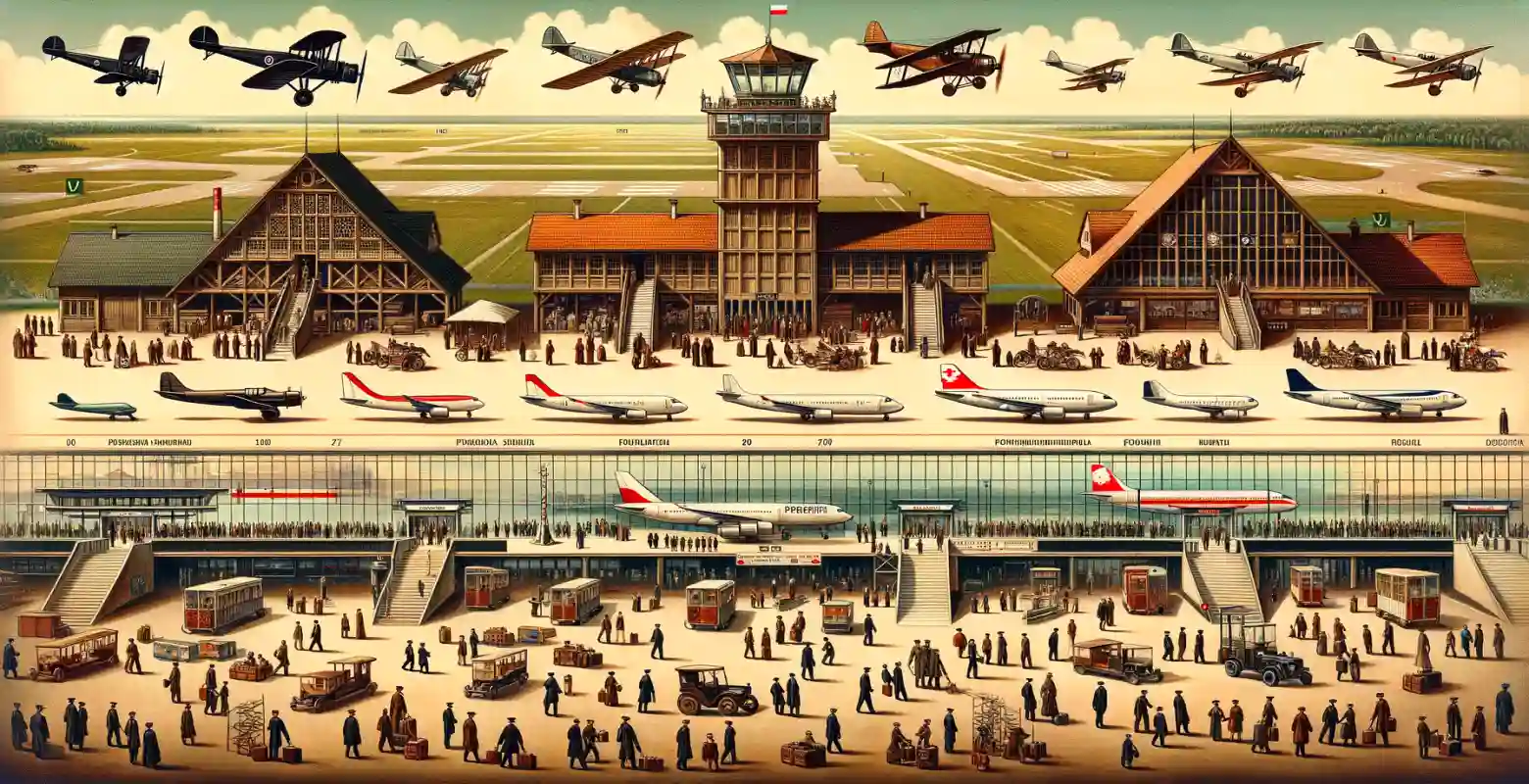The development of airports in Poland - from pioneering times to the present day
Introduction
The development of airports in Poland is a fascinating story of technological, economic, and social progress that dates back to the early 20th century. From the first modest airfields, through the dynamic growth during the interwar period, to the modern airports of the 21st century - the history of airports in Poland reflects global changes in air transport as well as economic and political transformations in the country. This topic is extremely important because aviation infrastructure plays a crucial role in economic development, tourism, and international communication. This article will present the history and contemporary status of Polish airports, highlighting their significance in today's world.
The Beginnings of Aviation in Poland
The history of aviation in Poland dates back to the times of partitions when aviation pioneers made the first attempts to take to the skies. In 1910, the first air shows took place in Warsaw, generating great interest among the public. However, the real development of airports began after regaining independence in 1918.
The year 1921 was a turning point - the first regular air connection on the Warsaw-Gdańsk route was established, operated by the Polish Airline Aerolloyd. In 1925, Polskie Linie Lotnicze LOT (Polish Airlines LOT) were established, becoming a symbol of the national carrier and driving the development of airport infrastructure.
Boom in the Interwar Period
The interwar period was a time of dynamic airport development in Poland. In 1933, the construction of Warsaw-Okęcie Airport was completed, becoming the country's main airport. Other important airports, such as Kraków-Balice and Poznań-Ławica, also began to develop. During this period, Poland became one of the leaders in aviation in Central Europe, and airports were symbols of modernity and progress.
Investments in aviation infrastructure were supported by the state, enabling the development of domestic air connections and the opening of new international routes. Airports were not only passenger service points but also significant logistic and commercial centers.
Airports in Poland after World War II
After World War II, the development of airports in Poland had to cope with significant destruction that affected the country. The reconstruction of airport infrastructure was a priority in the post-war period. Warsaw-Okęcie Airport was gradually rebuilt and expanded, allowing the resumption of international air connections.
In the 1970s, the modernization of existing airports and the construction of new ones began, in response to the growing demand for air travel. During this time, airports in Gdańsk, Katowice, and Wrocław were established, among others.
Political Transformation and Its Impact on Airport Development
The political changes after 1989 brought new challenges and opportunities for the development of airports in Poland. The opening of borders and accession to the European Union in 2004 significantly increased air traffic. In response to these changes, many airports underwent extensive modernization, and their infrastructure was adapted to international standards.
During this period, the privatization of some airports and cooperation with international operators were also key to development. This led to improved management efficiency and attracted new airlines, further increasing the availability of international connections.
Modern Airports and Their Role in the 21st Century
Currently, Poland has a modern network of airports that play a crucial role in international and domestic communication. Warsaw Chopin Airport is the largest airport in the country, serving millions of passengers annually. Other important airports include Kraków-Balice, Gdańsk-Rębiechowo, Wrocław-Strachowice, and Katowice-Pyrzowice.
These airports not only handle passenger flights but also serve as important cargo centers, which is significant for the economy. In recent years, the importance of regional airports has also been growing, as they handle more international connections, contributing to the development of tourism and business in the regions.
Challenges and the Future of Polish Airports
The future of Polish airports is linked to several significant challenges. One of them is the need for further modernization and expansion of infrastructure to meet the increasing demand for air travel. Introducing new technologies, such as automation of check-in processes and security controls, is essential to enhance operational efficiency.
Another challenge is the environmental impact of air transport, involving the reduction of CO2 emissions and the implementation of more environmentally friendly technological solutions. In the context of climate change and growing environmental awareness, airports must seek ways to minimize their impact on the environment.
Summary
The development of airports in Poland is a dynamic and complex history that is an integral part of the country's economic and social development. From pioneering beginnings to modern airports, Polish airports have come a long way, becoming key elements of transportation infrastructure. Their development not only facilitates international communication but also supports tourism and trade, contributing to economic growth.
The future of Polish airports requires further modernization and adaptation to changing market and environmental conditions. The introduction of innovative technological solutions and environmental protection measures will be crucial. For readers interested in the topic, following the development of these key economic assets and being aware of their impact on daily life and the future of Poland is worthwhile.






Number of comments: 0